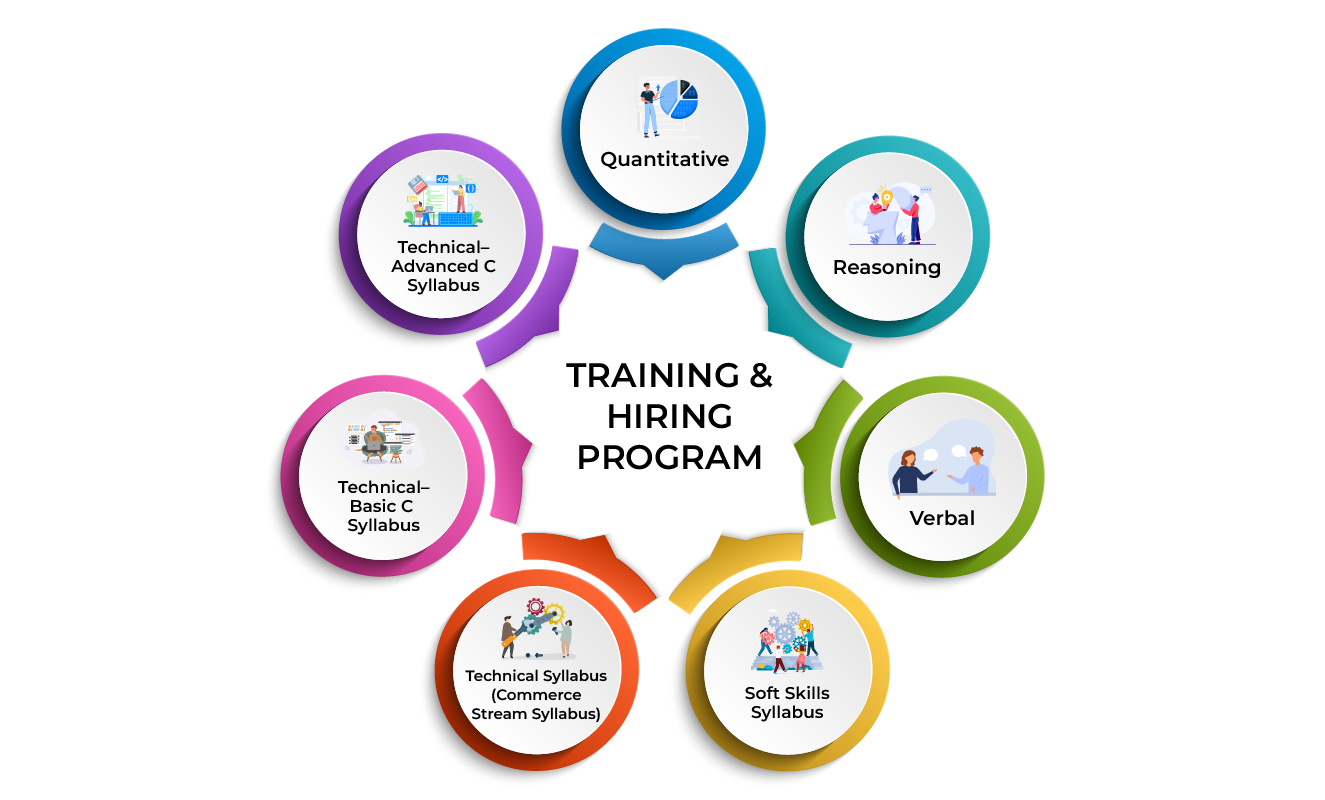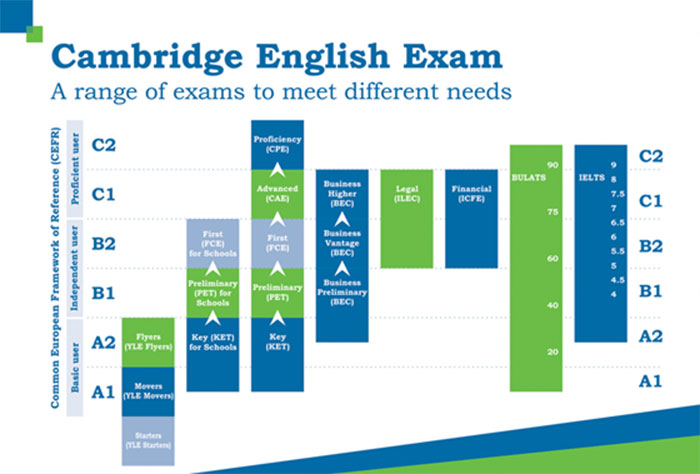Six Phrase
MBA
PRIME - Placement Fit - Training & Hiring Program - III rd Year

Cambridge English Program

English Competency Development Training
Speak the language of your customer, create memorable experiences and drive sales. Your career and future business are prone to grow only with language development. We, at Six Phrase, tailor the content focusing on your future business needs, and you can measure your success with our special communication courses.
At Six Phrase, you are exposed to a variety of accents and speakers, as well as a range of colloquial and idiomatic language in context. Also, our special training on English Competency Development (ECD) and Cambridge English Training (BEC, YLE, KET, PET, FCE, BULATS, IELTS) assures you with a ray of hope for a future you have always dreamt of.

Training & Hiring Program
- Training – 120 Hours of Technical, Aptitude & SoftSkills Training.
- AI Enabled LMS (Learning Management System) & Talent Hiring Platform based on EMPLOYABILITY INDEX SCORE (EIS).
- Marquee (salary > 20lakhs per annum), Super Dream (salary 10 lakhs to 20lakhs per annum), Dream (salary 5 lakhs to 10lakhs per annum), and Service (salary < 5 lakhs per annum) Companies Placements.
- Hiring – Marquee (salary > 20lakhs per annum), Super Dream (salary 10 lakhs to 20lakhs per annum), Dream (salary 5 lakhs to 10lakhs per annum), and Service (salary < 5 lakhs per annum) Companies Placements.
- Opportunity 1: During our training program enroll students in MySlate LMS. Follow up and motivate students to complete the courses in LMS. Award reward points (EMPLOYABILITY INDEX SCORE) for each problem/program a student solves in the LMS. Categorize Talent in 7th Semester based on scores accumulated (EMPLOYABILITY INDEX SCORE) in our LMS. Place students in Marquee, Super Dream, Dream & Services companies based on scores accumulated.
Outcome based placements based on below target EMPLOYABILITY INDEX SCORE.
- Marquee Students >25000 points
- Super Dream Students >20000 && <25000 points
- Dream Students >15000 && <20000 points
- Service Students >12000 && <15000 points
- Opportunity 2: Identify Special Talent in 7th Semester based on Employability Index Score accumulated in our LMS. Train the identified students on Future Skills (AI, ML, DS, Big Data, Cloud, Cyber Security, Full Stack etc…) and Deploy them. Students will not be charged for Future Skills Training.
- Opportunity 3: Identify Talent who wish to Upgrade their existing service offer to product offer at the end of 7th or beginning of 8th Semester (after Day1 placements). Train them on Future Skills and Deploy them. Students will not be charged for Future Skills Training.
- Opportunity 4: Identify Unplaced & Deserving Talent at the end of 7th or beginning of 8th Semester (after Day1 placements). Hire them with a Stipend of 15k to 20k per month and train the students for services companies and Deploy them.
Aptitude Syllabus
QUANTITATIVE
- Time And Work
- Time, Speed, Distance
- Averages
- Ratios & Proportions
- Sequence, Series And Progressions
- Co-Ordinate Geometry
- Statistics
- Combinatorics
- Linear Algebra
- Probability
- Percentages
- Permutations & Combinations
- Numbers
- Functions
- Mensuration
- Sudoku
- Percentage
- Trigonometry
- Set Theory
- Theory Of Equation
- Logarithm
- Functions And Graph
- Data Interpretation On Multiple Charts
- Profit And Loss
- Simple Equation
- Algebra
- Geometry
- Data Interpretion
- Alligations And Mixtures
- Simple Interest & Compound Interest
- Pipes And Cisterns
- Problems On Hcf And Lcm
- Areas, Shapes, Perimeter
- Height And Distance
- Partnership
- Races And Games
- Simplification
- Clocks & Calendars
- Problems On Ages
- Surds & Indices
- Data Sufficiency
- Logarithms
- Problems On Trains
- Cryptarithmetic
- Divisibiliy
- Numbers And Decimal Fractions
- Spatial Ability
- Chain Rule
REASONING
- Data Arrangements
- Number Series
- Lr – Arrangements
- Lr – Ranking
- Assertion And Reason
- Team Formations
- Conditional Syllogisms
- Statement And Conclusions
- Statement – Courses Of Action
- Syllogism
- Statement And Assumptions
- Critical Reasoning
- Coding And Decoding
- Odd Man Out
- Missing Letters Puzzles
- Number Puzzles
- Paper Cutting
- Paper Folding
- Pattern Completion
- Playing Cards Puzzles
- Rule Detection
- Shape Construction
- Attention To Details
- Flowcharts
- Puzzles
- Direction Sense
- Image Based Problems
- Blood Relationship
- Seating Arrangments
- Logical Deduction
- Character Puzzles
- Clock Puzzles
- Dot Situation
- Embedded Images
- Figure Matrix
- Grouping Of Images
- Image Analysis
- Logical Puzzles
- Mirror And Water Images
- Cubes
- Sequence And Series
- Statements
- Venn Diagrams
- Analogies
- Data Sufficiency
- Inferred Meaning
- Logical Order
- Mathematical Operations
- Logical Choice
- Analytical Reasoning
VERBAL
- Paragraph Formation
- Sentence Completion
- Reading Comprehensions
- Sentence Correction
- Spotting Errors
- Sentence Selection
- Antonyms
- Synonyms
- Jumbled Sentences
- Selecting Words
- Sentence Improvement
- Odd Words
- Sentence Formation
- Fact – Inference – Judgement
Soft Skills Syllabus
- Dressing Etiquette
- Resume Writing Skills
- Group Discussion
- Interview Skills
- Mock Interview Sessions
Technical Syllabus (Commerce Stream Syllabus)
Technical – Basic C Syllabus
Basic C Programming – Topics
Technical – Advanced C Syllabus
Advanced C Programming – Topics
- C – Advanced – Part 1 – Introduction to Bit Manipulation
- C – Advanced – Part 2 – Problems on Bit Manipulation
- C – Advanced – Part 3 – Introduction to Recursion
- C – Advanced – Part 4 – Types of Recursion
- C – Advanced – Part 5 – Solving Recurrence Relation I
- C – Advanced – Part 6 – Solving Recurrence Relation II
- C – Advanced – Part 7 – Solving Recurrence Relation III
- C – Advanced – Part 8 – Time Complexity Analysis
- C – Advanced – Part 9 – Indirect Recursion
- C – Advanced – Part 10 – Solving Recurrence Relation for Indirect recursion and Nested Recursion
- C – Advanced – Part 11 – Tree Recursion
- C – Advanced – Part 12 – Recursion – Sum of Natural Number
- C – Advanced – Part 13 – Recursion – Factorial Number
- C – Advanced – Part 14 – Recursion – Exponent/Power Function
- C – Advanced – Part 15 – Recursion – Taylor Series
- C – Advanced – Part 16 – Recursion – Taylor Series – Optimization Method 1
- C – Advanced – Part 17 – Recursion – Taylor Series – Optimization Method 2
- C – Advanced – Part 18 – Fibinocci Series
- C – Advanced – Part 19 – Fibinocci Series – Optimization
- C – Advanced – Part 20 – Combination Formula
- C – Advanced – Part 21 – Tower of Hanoi
- C – Advanced – Part 22 – Tower of Hanoi Implementation
- C – Advanced – Part 23 – Introduction to Array
- C – Advanced – Part 24 – Static vs Dynamic Array
- C – Advanced – Part 25 – Two Dimensional Matrix
- C – Advanced – Part 26 – Arrays in Compilers
- C – Advanced – Part 27 – Matrix Representation – Row-Major , Column-Major
- C – Advanced – Part 28 – Array ADT – display , append, insert, delete
- C – Advanced – Part 29 – Array ADT – delete, get, set, search
- C – Advanced – Part 30 – Array ADT – shift / rotate
- C – Advanced – Part 31 – Inserting in a sorted Arrayand checking if an Array is sorted
- C – Advanced – Part 32 – Segregating positive and negative numbers
- C – Advanced – Part 33 – Merging two sorted arrays
- C – Advanced – Part 34 – Set Operations – Union, Intersection
- C – Advanced – Part 35 – Set Operations – Difference, Set Membership
- C – Advanced – Part 36 – Finding missing elements in Arrays – Different Methods
- C – Advanced – Part 37 – Finding duplicate elements in a Integer array
- C – Advanced – Part 38 – Check for Anagrams in a String and Permutations of a String
- C – Advanced – Part 39 – Matrices – Diagonal Matrix
- C – Advanced – Part 40 – Matrices – Lower Triangular Matrix
- C – Advanced – Part 41 – Matrices – Upper Triangular Matrix
- C – Advanced – Part 42 – Matrices – Symmetric Matrix
- C – Advanced – Part 43 – Matrices – Tri-diagonal Matrix
- C – Advanced – Part 44 – Matrices – Square Band Matrix
- C – Advanced – Part 45 – Matrices – Toeplitz Matrix
- C – Advanced – Part 46 – Sparse Matrix – Introduction
- C – Advanced – Part 47 – Addition of Sparse Matrices
- C – Advanced – Part 48 – Polynomial Representation and Evaluation
- C – Advanced – Part 49 – Polynomial Addition
